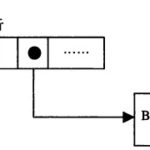总结:
1.myisam保存表的总行数,因此count(*)并且无where子句,很快会返回表的总行数
2.myisam保存表的总行数,利用count(column)并且无where子句,并且此column不为null,很快会返回表的总行数
3.myisam保存表的总行数,利用count(column)并且无where子句,并且此column可以为null,mysql会对表进行全表或全索引扫描来确定行数
4.innodb查询count(*),count(column(not null)),count(column(may be null))并且无where子句,mysql会对表进行全表或全索引扫描来确定行数
5.myisam和innodb查询count(*),count(column(not null)),count(column(may be null))并且存在where子句,mysql会对表进行索引扫描(如果列上有索引),速度也比较快
下面我们用数据来验证一下:
test_lan 表结构如下,数据条数为160万左右。
mysql> desc test_lan;
+---------+-------------+------+-----+---------+----------------+
| Field
+---------+-------------+------+-----+---------+----------------+
| id
| name
| value
| package | varchar(50) | YES
+---------+-------------+------+-----+---------+----------------+
mysql> show create table test_lan;
+----------+-------------------------------------------------------------------------------------------------------------------------------------------------------------------------------------------------------------------------------------------------------------------------------------------+
| Table
CREATE TABLE `test_lan` (
) ENGINE=MyISAM AUTO_INCREMENT=1618705 DEFAULT CHARSET=utf8
先清缓存
mysql> reset query cache;
也可以
mysql> flush tables test_lan;
测试1:count(0) 和count(*) 无 where 字句
mysql> select count(0) from test_lan;
+----------+
| count(0) |
+----------+
|
+----------+
1 row in set (0.00 sec)
mysql> select count(*) from test_lan;
+----------+
| count(*) |
+----------+
|
+----------+
1 row in set (0.00 sec)
差别不大,时间都很短
测试2:count(0) 和count(*)
mysql> select count(*) from test_lan where id >0;
+----------+
| count(*) |
+----------+
|
+----------+
1 row in set (0.78 sec)
mysql> flush tables test_lan;
mysql> flush tables test_lan;
mysql> select count(*) from test_lan where id >0;
+----------+
| count(*) |
+----------+
|
+----------+
1 row in set (0.77 sec)
可以看出count(0) 和count(*)时间相差不大,但是有where字句比没有where字句时间相差很大。
原因:myisam表的count是表的一个属性,如果没有where字句,count直接返回总函数,如果有where字句需要全表扫描。
测试2:count(column在null和not null 列上的影响)
PS:id为主键,非空列;package为may null列
mysql> flush tables test_lan;
Query OK, 0 rows affected (0.00 sec)
mysql> select count(*) from test_lan where id >0;
+----------+
| count(*) |
+----------+
|
+----------+
1 row in set (0.79 sec)
mysql> flush tables test_lan;
mysql> select count(id) from test_lan;
+-----------+
| count(id) |
+-----------+
|
+-----------+
1 row in set (0.00 sec)
mysql> select count(`package`) from test_lan;
+------------------+
| count(`package`) |
+------------------+
|
+------------------+
1 row in set (6.17 sec)
可以看出在not null列和 非not null 列上的差距很大。
下面再来看看 count在innodb类型下面的表现。
mysql> alter table test_lan engine=innodb;
更改表类型
mysql> select count(*) from test_lan;
+----------+
| count(*) |
+----------+
|
+----------+
1 row in set (0.88 sec)
mysql> select count(*) from test_lan where id >0;
+----------+
| count(*) |
+----------+
|
+----------+
1 row in set (1.08 sec)
mysql> select count(`id`) from test_lan;
+-------------+
| count(`id`) |
+-------------+
|
+-------------+
1 row in set (0.84 sec)
mysql> select count(`package`) from test_lan;
+------------------+
| count(`package`) |
+------------------+
|
+------------------+
1 row in set (1.05 sec)
总结:innodb和myisam类型的最主要的区别就是
count(*) 在 无where字句和有where字句的情况下差别不大,都需要全表扫描
而在count(may null column)列的时候速度较快。







